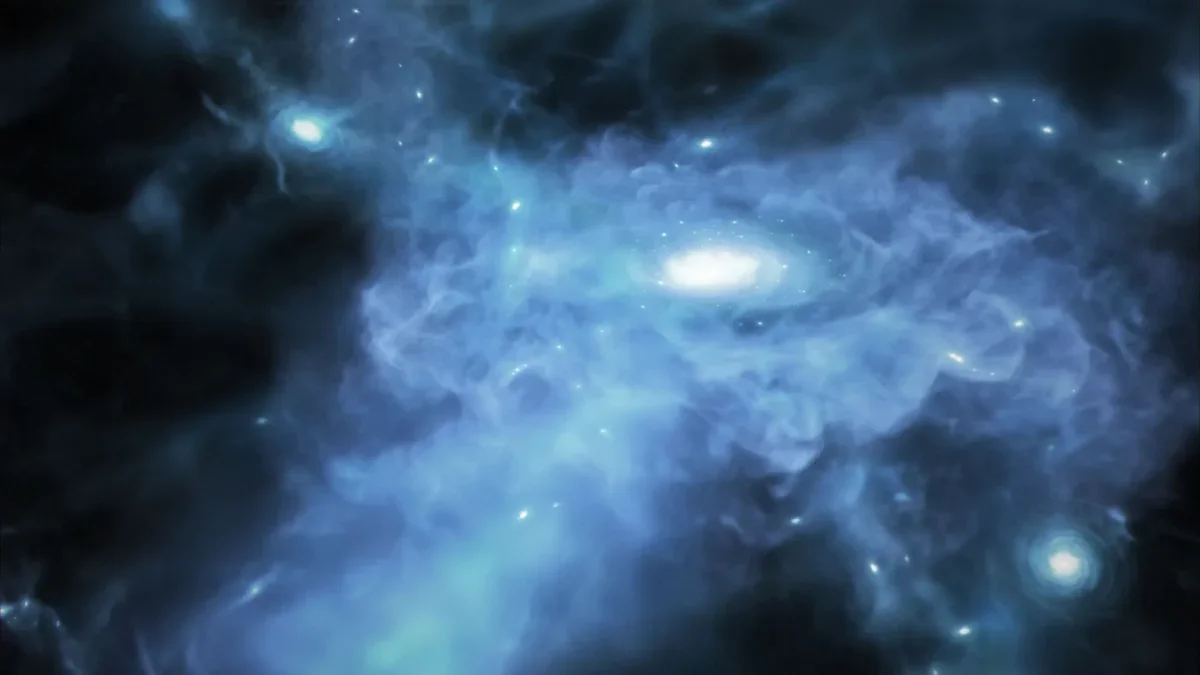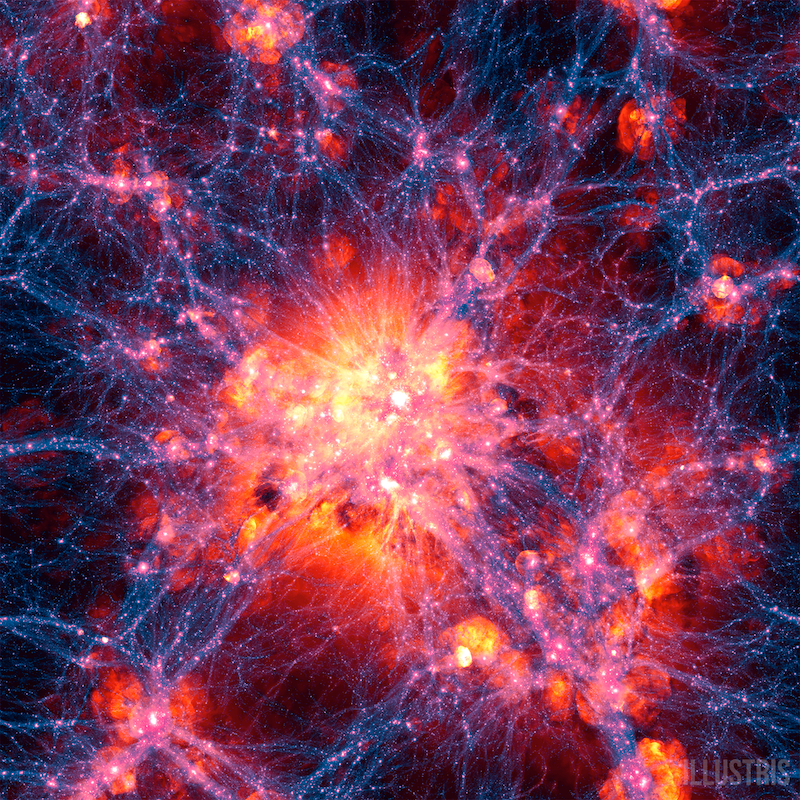
The James Webb Space Telescope (JWST) is well-known for discovering young, bright galaxies in the very early universe. How such regions, bursting with stars, formed so quickly and survived is enticing researchers to rethink cosmic evolution.
A recent study published in Monthly Notices of the Royal Astronomical Society: Letters uses JWST data to probe a long-standing question: When did the universe transition from cold and neutral to hot and ionized? (Neutral atoms have no charge, as the number of electrons they contain matches the number of protons in their nucleus. Ionized particles, or ions, have lost one or more electrons, and are thus electrically charged.)
The study proposes that this change, known as the Epoch of Reionization, ended much earlier than previously thought. And if that’s the case, the find would have important implications for understanding the universe’s early years.
Related: When did the lights turn on in the universe?
Reionizing the cosmos
The universe was ionized for a first time immediately following the Big Bang. A mix of electrons, protons, and neutrons permeated the cosmos, until the ambient temperature cooled enough for the charged particles to combine into neutral hydrogen. As gravity further drew the gas together, the first stars and galaxies formed.
Then, another remarkable change took place: Photons from these galaxies’ stars escaped and collided with the hydrogen in intergalactic space, causing those atoms to lose their electrons. Over time, these “bubbles” of ionized gas grew larger and merged together to fill the universe.
“[This] was the last major phase transition and set the stage for the rest of cosmic history,” says lead author and theoretical cosmologist Julian Muñoz of the University of Texas at Austin.
Probing reionization
To probe when the Epoch of Reionization happened, Muñoz and his team used JWST to estimate how many photons were produced by early galaxies. The team also estimated the fraction of such light that would have escaped into intergalactic space, where it would have ionized neutral hydrogen. By comparing the latter to the number of hydrogen atoms in the early universe, they found that reionization would have ended around 650 million years after the Big Bang.
Scientists previously dated the end of reionization based on when the light they observe from early galaxies no longer shows emission from hydrogen at a specific wavelength, known as Lyman-alpha (α), due to absorption of this light by neutral hydrogen. This, together with satellite measurements of the fraction of the universe’s first light, known as the Cosmic Microwave Background (CMB), that is scattered by electrons freed during reionization, suggest the epoch ended around 1 billion years after the Big Bang.
Erica Nelson, an astrophysicist at the University of Colorado Boulder who wasn’t involved in the study, says, “the paper brings together a lot of this information to show that these [the latter and the JWST observations] are inconsistent and that we have a problem, which is a really powerful thing to do.”
Tension or not?
According to the study, early JWST results suggest an excess of ionizing photons. The surplus doesn’t include light sources from the accretion disks of black holes, which have also been detected using JWST. “If you add these photons, there is even more tension,” between the two determinations for the end of reionization, says Muñoz.
The researchers do note that perhaps their estimates of how efficient early galaxies are at producing ionizing photons are too high, due to JWST being used to target mostly brighter starburst galaxies. And the fraction of photons that would have escaped galaxies to ionize hydrogen can’t be measured. To get around this, the team used escape fractions measured from local ionizing galaxies, which range between 10 and 20 percent.
Bridging observations and models
The new study highlights the importance of using different probes to study the Epoch of Reionization. In particular, JWST provides a way to measure photon production by early galaxies — the “ant’s view,” as Muñoz says — while models based on Lyman-alpha and CMB observations offer a “bird’s-eye view” of reionization.
Christopher Cain, a theoretical astrophysicist at the University of Arizona who wasn’t involved in the study, adds: “We need to put JWST together with these other probes to get the complete picture of what was going on.” He says such a synergy could help understand the physical processes that took place in the early universe.
For example, perhaps reionization was driven by small galaxies that were initially bursting with stars and eventually quieted down. Or maybe massive, bright galaxies drove the epoch, or accreting black holes played a bigger role than previously thought.
For now, the new study offers an interesting look into the timing of the final, monumental change of the universe and is inspiring researchers to think about how to reconcile the differences.
“Something has to be wrong,” says Nelson, “and inherently, if you’re saying that, you’re going to be controversial. But that is how we advance our understanding of the universe.”
Editor’s note: This story has been updated to state that that Epoch of Reionization was the first time that hydrogen atoms lost their electrons, as well as clarify the two values to which Nelson was referring.









